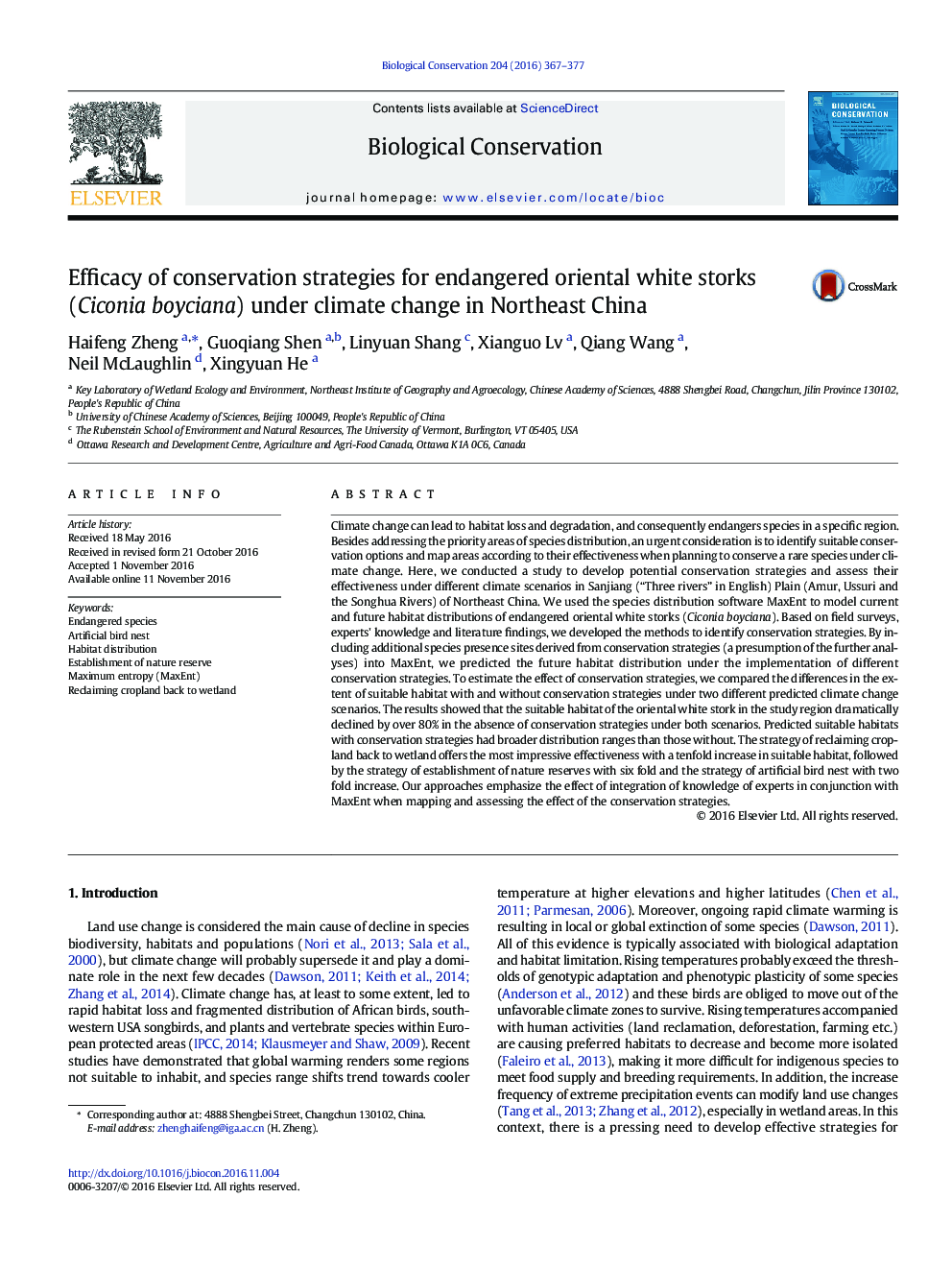| کد مقاله | کد نشریه | سال انتشار | مقاله انگلیسی | نسخه تمام متن |
|---|---|---|---|---|
| 5743413 | 1412305 | 2016 | 11 صفحه PDF | دانلود رایگان |

- The extent of suitable habitat for oriental white stork declined by 80% under future climate change in Northeast China.
- Habitat suitability is most affected by temperature and precipitation in the early and late breeding period.
- Conservation strategies offer more than two times increase in suitable habitat compared with future scenarios.
- Reclaiming cropland back to wetland is the most impressive conservation measurement with tenfold effectiveness.
- Integrating MaxEnt model and expert decision is a useful tool to predict species' spatial suitable habitat.
Climate change can lead to habitat loss and degradation, and consequently endangers species in a specific region. Besides addressing the priority areas of species distribution, an urgent consideration is to identify suitable conservation options and map areas according to their effectiveness when planning to conserve a rare species under climate change. Here, we conducted a study to develop potential conservation strategies and assess their effectiveness under different climate scenarios in Sanjiang (“Three rivers” in English) Plain (Amur, Ussuri and the Songhua Rivers) of Northeast China. We used the species distribution software MaxEnt to model current and future habitat distributions of endangered oriental white storks (Ciconia boyciana). Based on field surveys, experts' knowledge and literature findings, we developed the methods to identify conservation strategies. By including additional species presence sites derived from conservation strategies (a presumption of the further analyses) into MaxEnt, we predicted the future habitat distribution under the implementation of different conservation strategies. To estimate the effect of conservation strategies, we compared the differences in the extent of suitable habitat with and without conservation strategies under two different predicted climate change scenarios. The results showed that the suitable habitat of the oriental white stork in the study region dramatically declined by over 80% in the absence of conservation strategies under both scenarios. Predicted suitable habitats with conservation strategies had broader distribution ranges than those without. The strategy of reclaiming cropland back to wetland offers the most impressive effectiveness with a tenfold increase in suitable habitat, followed by the strategy of establishment of nature reserves with six fold and the strategy of artificial bird nest with two fold increase. Our approaches emphasize the effect of integration of knowledge of experts in conjunction with MaxEnt when mapping and assessing the effect of the conservation strategies.
Journal: Biological Conservation - Volume 204, Part B, December 2016, Pages 367-377